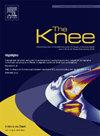Deep learning for tibial plateau fracture detection and classification
IF 1.6
4区 医学
Q3 ORTHOPEDICS
引用次数: 0
Abstract
Background
Deep learning (DL) has been shown to be successful in interpreting radiographs and aiding in fracture detection and classification. However, no study has aimed to develop a computer vision model for tibia plateau fractures using the Schatzker classification. Therefore, this study aims to develop a deep learning model for (1) detection of tibial plateau fractures and (2) classification according to the Schatzker classification.
Methods
A multicenter approach was performed for the collection of radiographs of patients with tibia plateau fractures. Both anteroposterior and lateral images were uploaded into an annotation software and manually labelled and annotated. The dataset was balanced for optimizing model development and split into a training set and a test set. We trained two convolutional neural networks (GoogleNet and ResNet) for the detection and classification of tibia plateau fractures following the Schatzker classification.
Results
A total of 1506 knee radiographs from 753 patients, including 368 tibial plateau fractures and 385 healthy knees, were used to create the algorithm. The GoogleNet algorithm demonstrated high sensitivity (92.7%) but intermediate accuracy (70.4%) and positive predictive value (64.4%) in detecting tibial plateau fractures, indicating reliable detection of fractured cases. It exhibited limited success in accurately classifying fractures according to the Schatzker system, achieving an accuracy of only 34.6% and a sensitivity of 32.1%.
Conclusion
This study shows that detection of tibial plateau fractures is a task that a DL algorithm can grasp; further refinement is necessary to enhance their accuracy in fracture classification. Computer vision models might improve using different classification systems, as the current Schatzker classification suffers from a low interobserver agreement on conventional radiographs.
胫骨平台骨折的深度学习检测与分类
深度学习(DL)已被证明在解释x光片和帮助骨折检测和分类方面取得了成功。然而,目前还没有研究旨在利用Schatzker分类开发胫骨平台骨折的计算机视觉模型。因此,本研究旨在开发一种深度学习模型,用于(1)胫骨平台骨折的检测和(2)根据Schatzker分类进行分类。方法采用多中心入路收集胫骨平台骨折患者的x线片。将正位和侧位图像上传到注释软件中并手动标记和注释。为了优化模型开发,对数据集进行了平衡,并将数据集分为训练集和测试集。我们训练了两个卷积神经网络(GoogleNet和ResNet),用于根据Schatzker分类检测和分类胫骨平台骨折。结果共使用753例患者的1506张膝关节x线片,其中胫骨平台骨折368例,健康膝关节385例。GoogleNet算法对胫骨平台骨折的检测灵敏度高(92.7%),准确率中等(70.4%),预测值为阳性(64.4%),对骨折病例的检测可靠。根据Schatzker系统,该方法在准确分类裂缝方面取得了有限的成功,准确率仅为34.6%,灵敏度为32.1%。结论胫骨平台骨折的检测是DL算法能够完成的任务;需要进一步改进,以提高裂缝分类的准确性。使用不同的分类系统,计算机视觉模型可能会得到改进,因为目前的Schatzker分类在传统x光片上的观察者之间的一致性很低。
本文章由计算机程序翻译,如有差异,请以英文原文为准。
求助全文
约1分钟内获得全文
求助全文
来源期刊

Knee
医学-外科
CiteScore
3.80
自引率
5.30%
发文量
171
审稿时长
6 months
期刊介绍:
The Knee is an international journal publishing studies on the clinical treatment and fundamental biomechanical characteristics of this joint. The aim of the journal is to provide a vehicle relevant to surgeons, biomedical engineers, imaging specialists, materials scientists, rehabilitation personnel and all those with an interest in the knee.
The topics covered include, but are not limited to:
• Anatomy, physiology, morphology and biochemistry;
• Biomechanical studies;
• Advances in the development of prosthetic, orthotic and augmentation devices;
• Imaging and diagnostic techniques;
• Pathology;
• Trauma;
• Surgery;
• Rehabilitation.
 求助内容:
求助内容: 应助结果提醒方式:
应助结果提醒方式:


